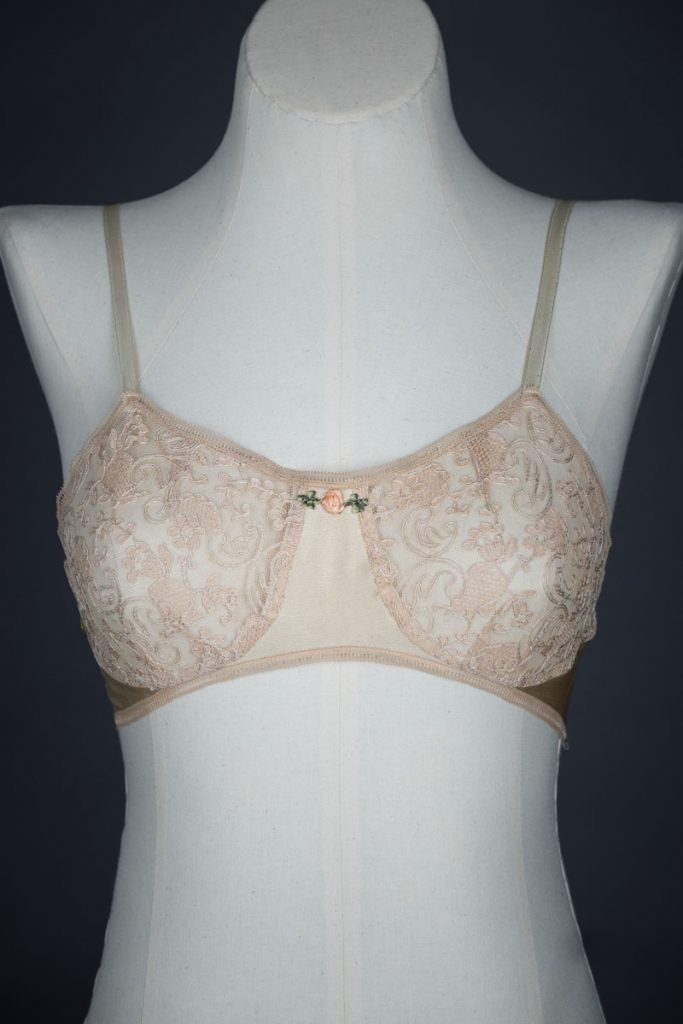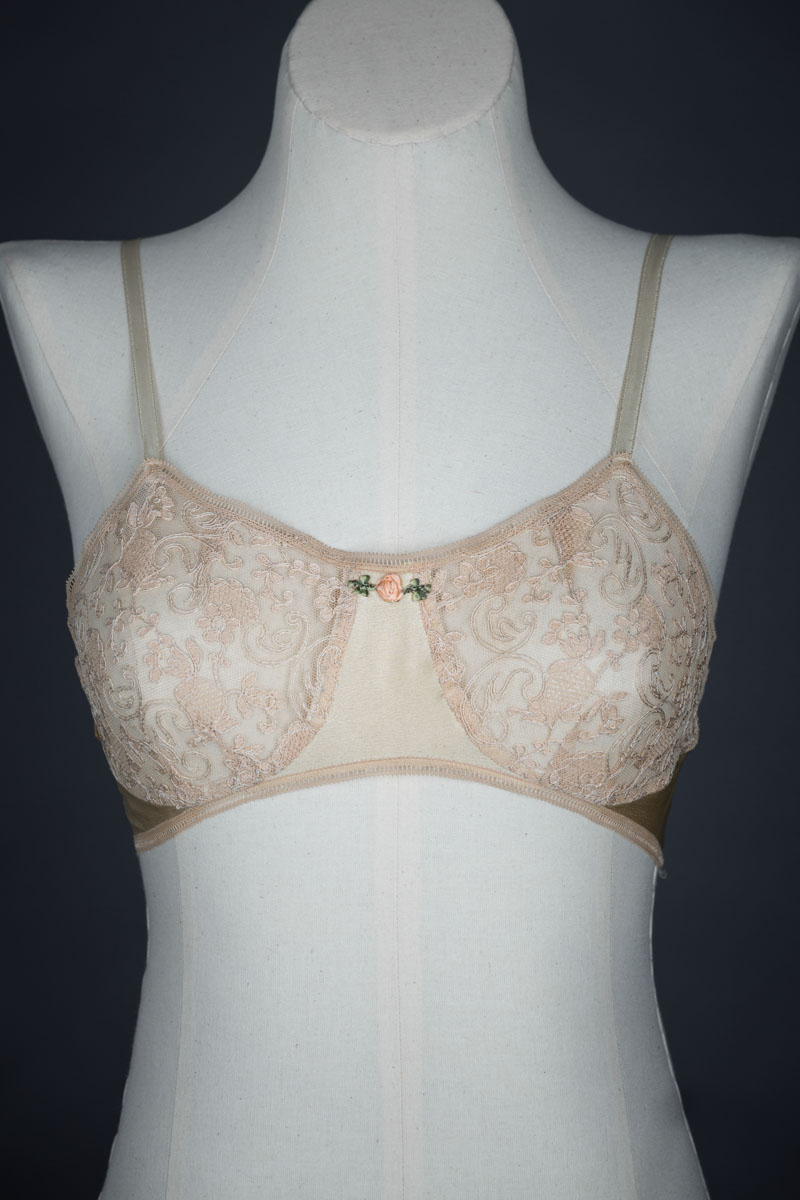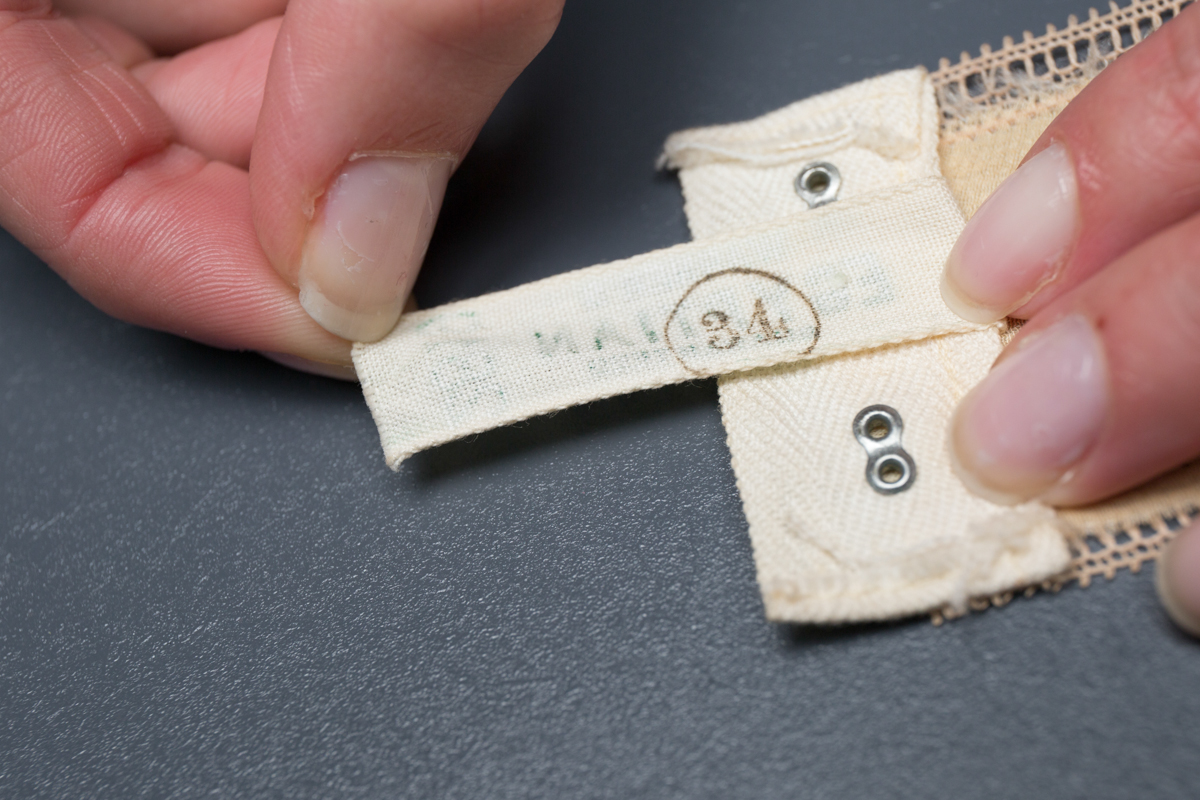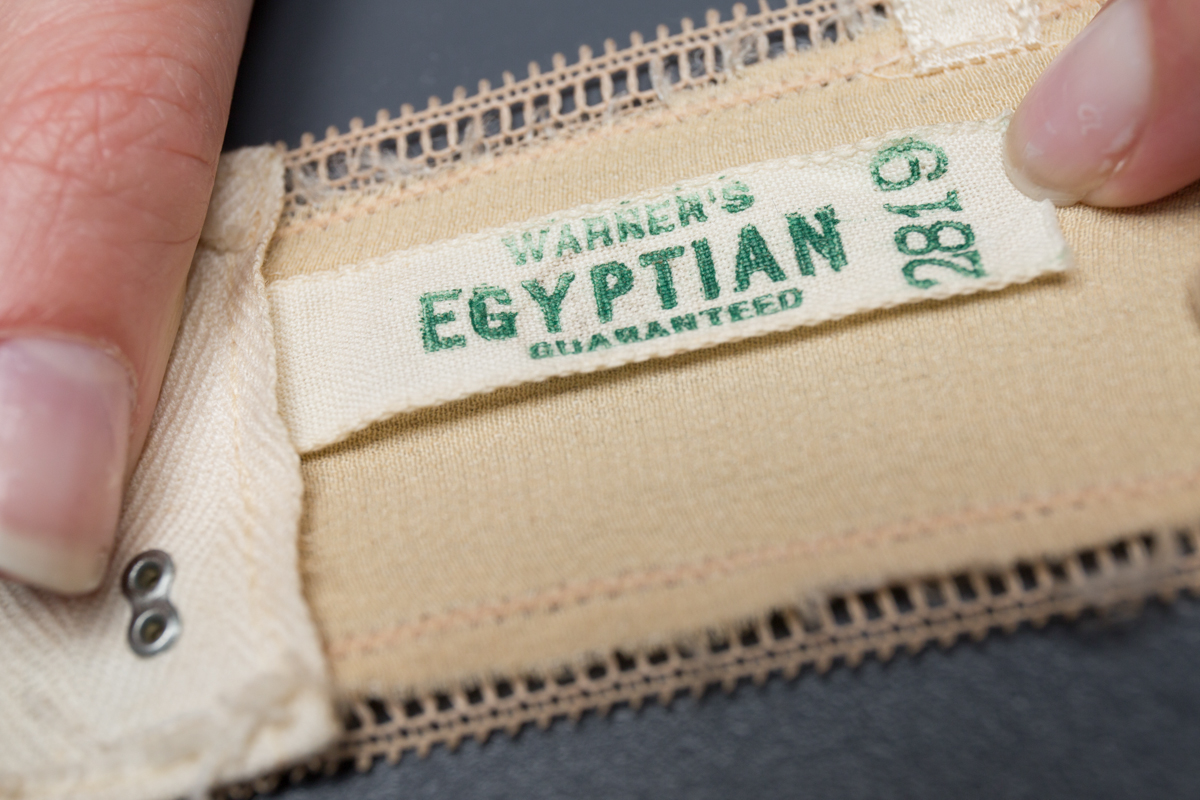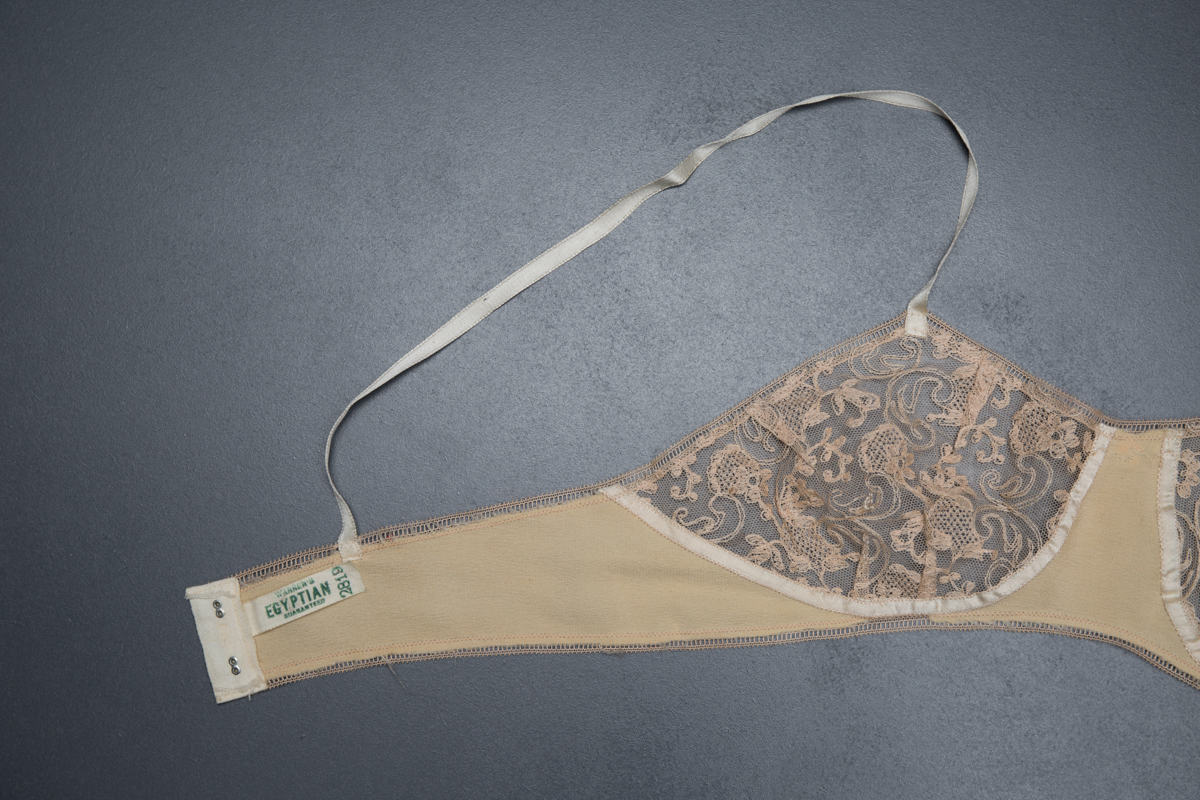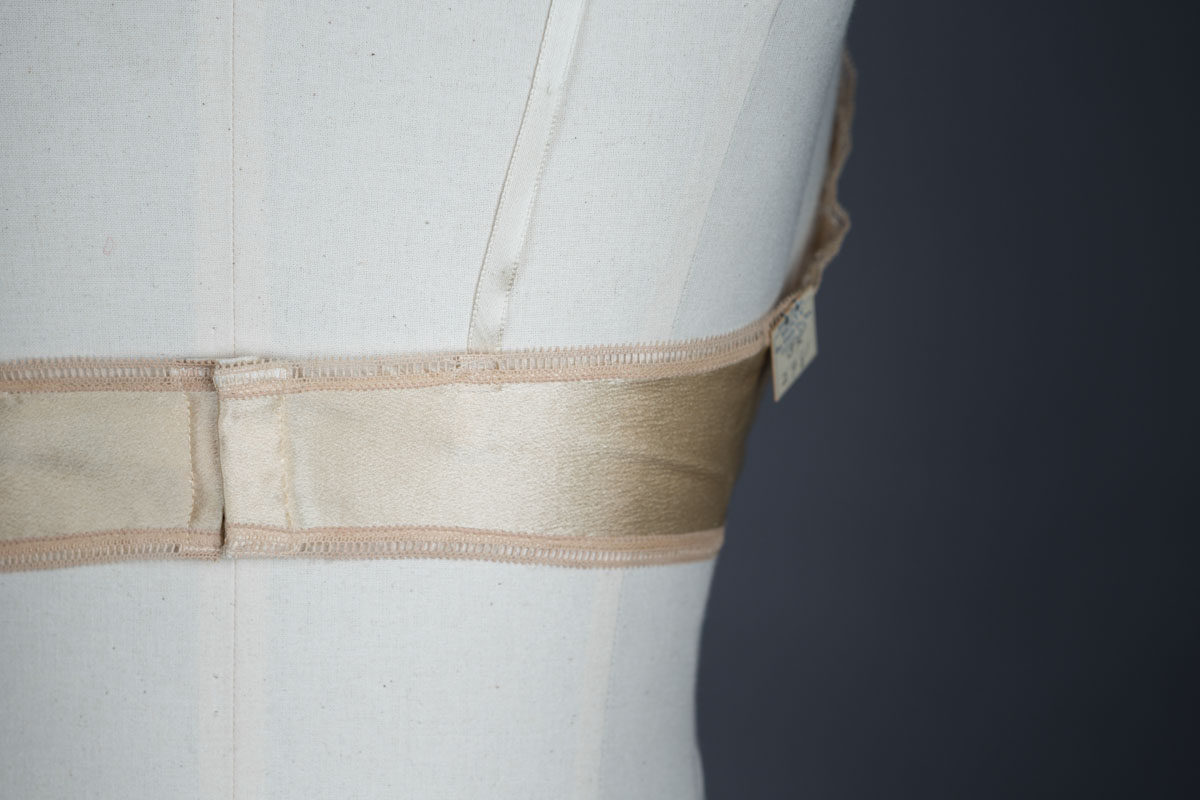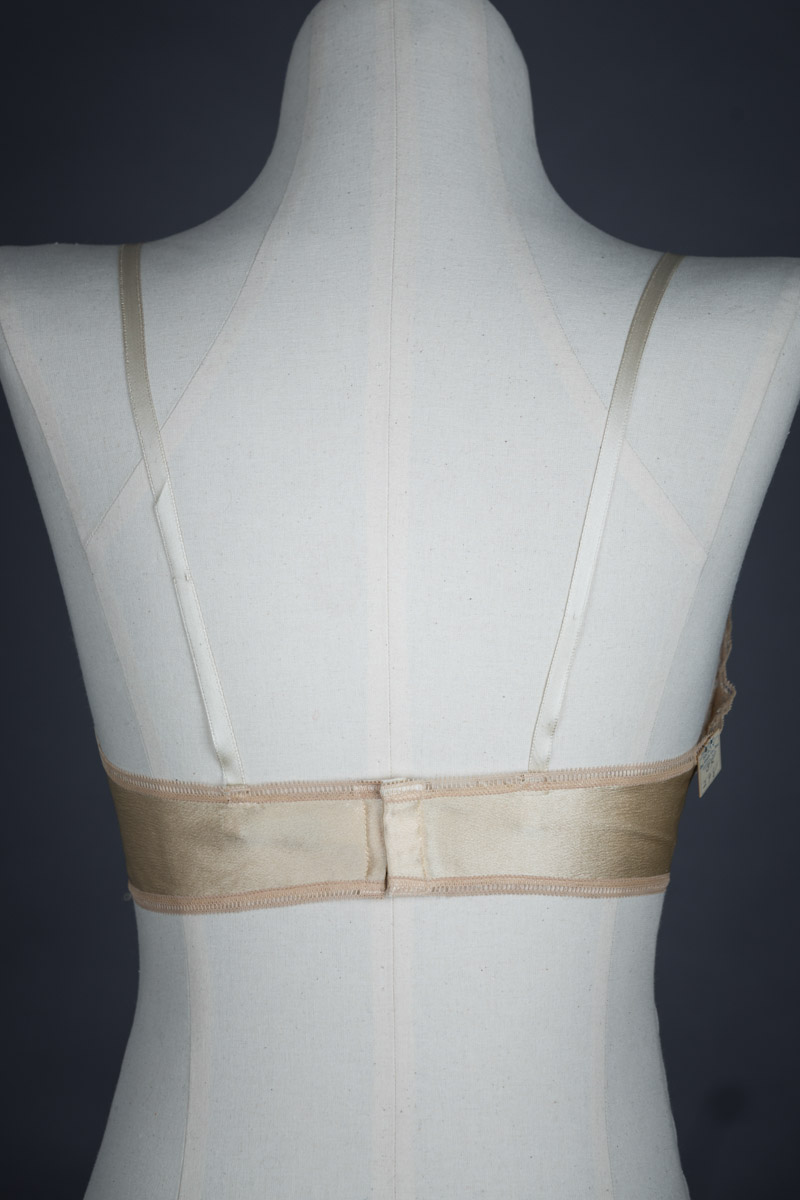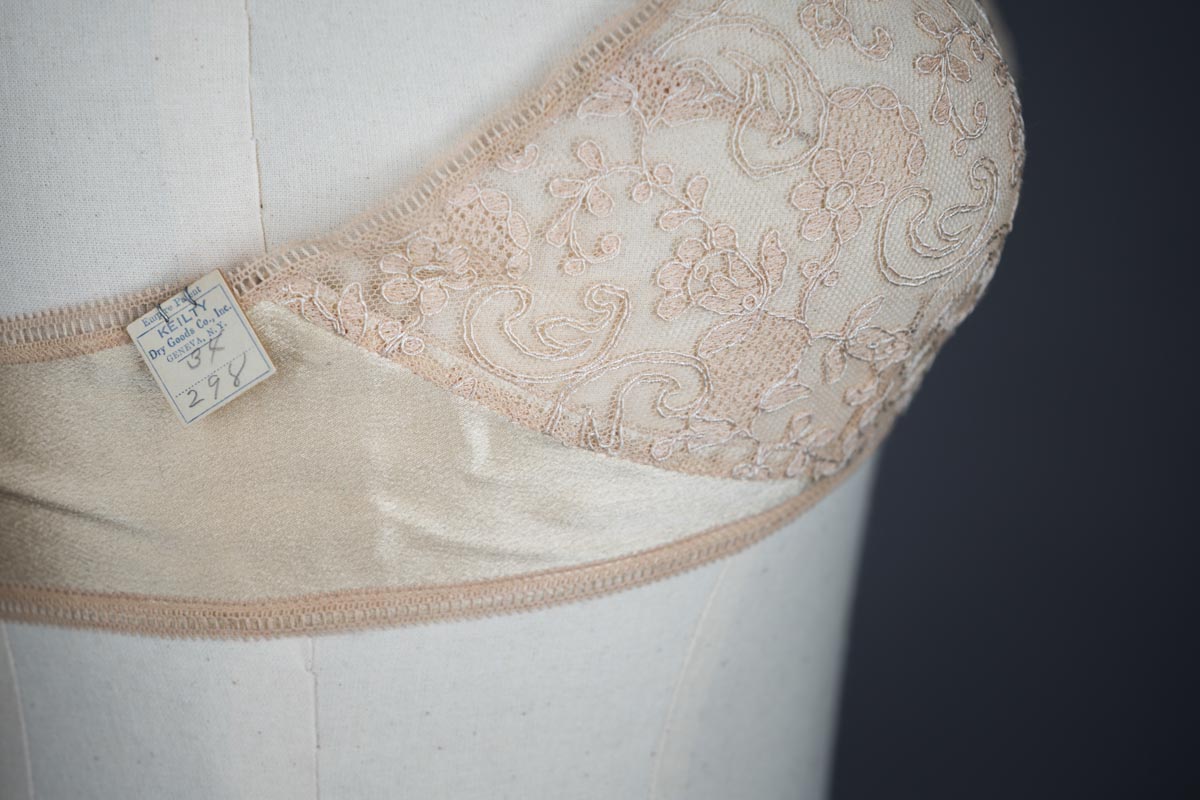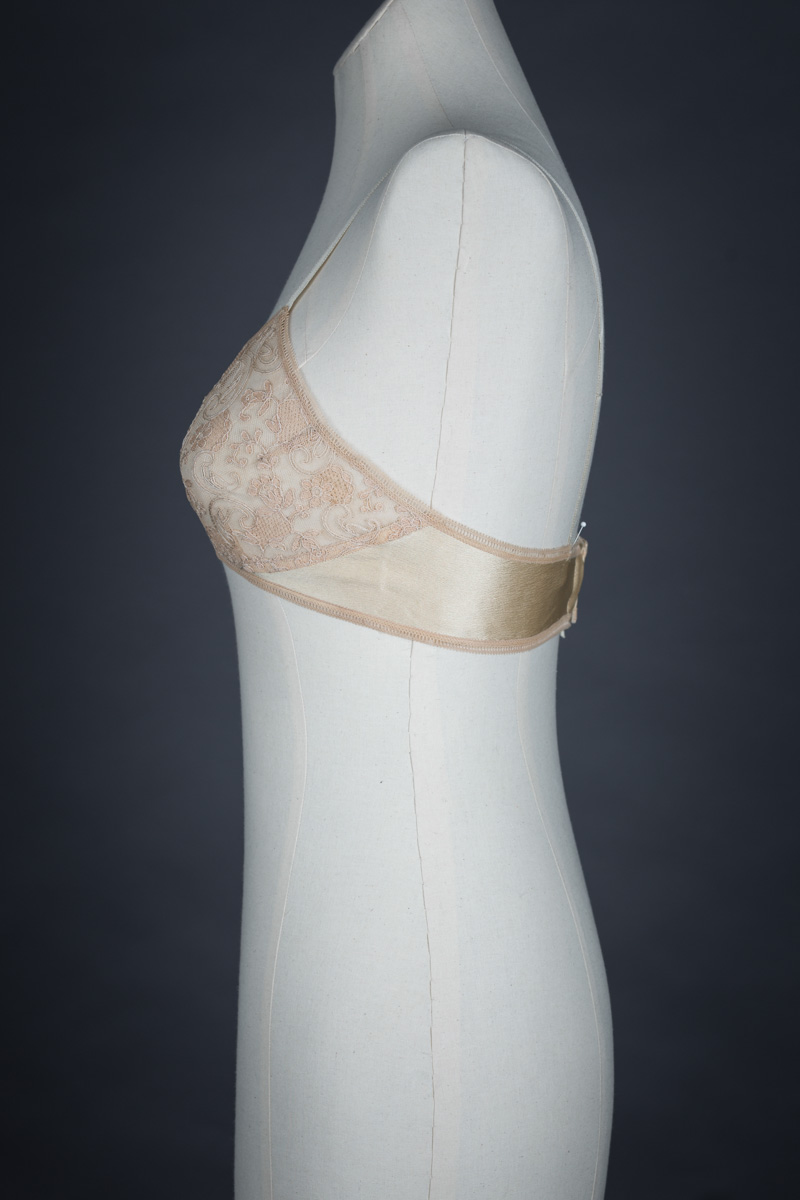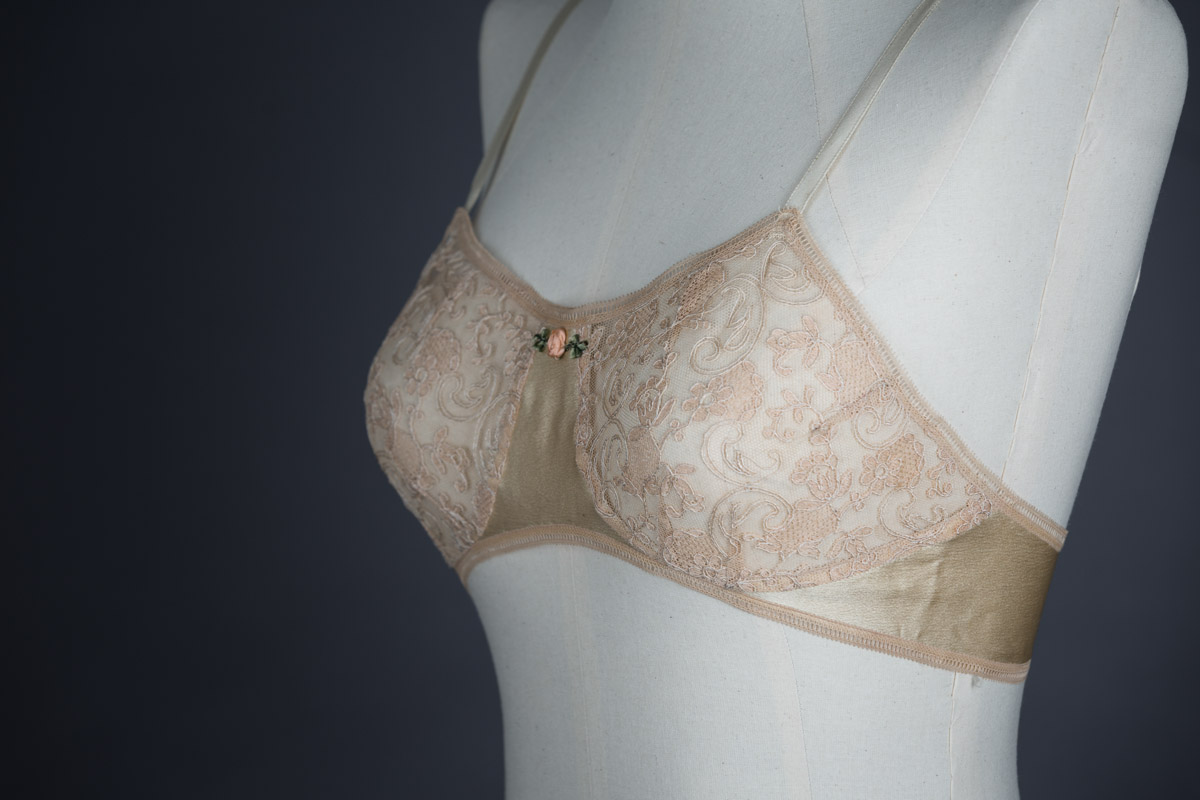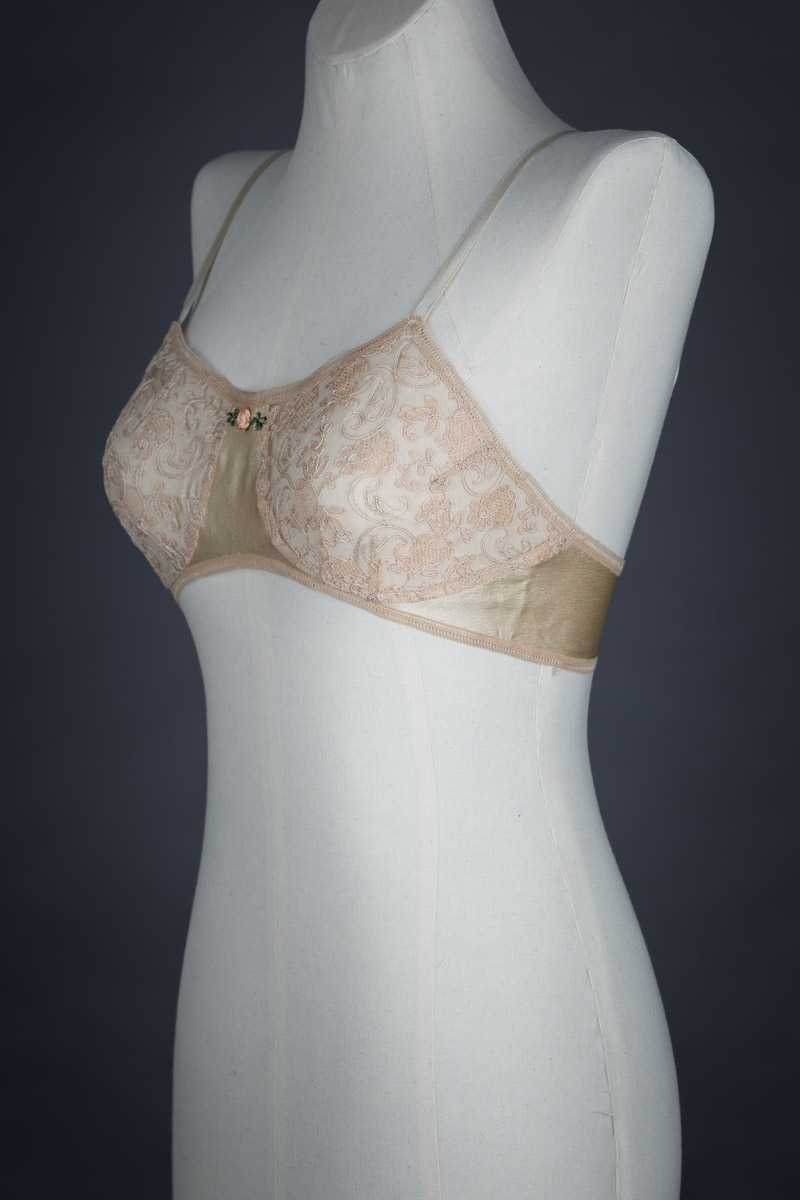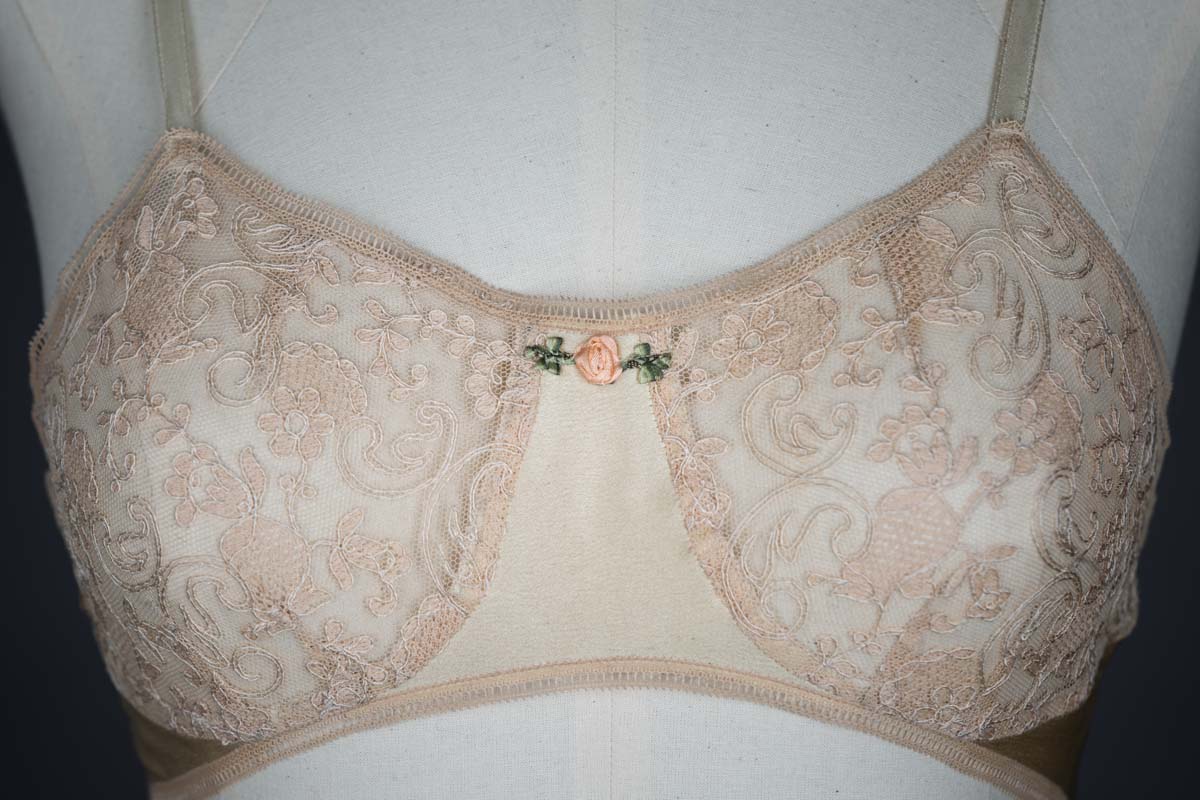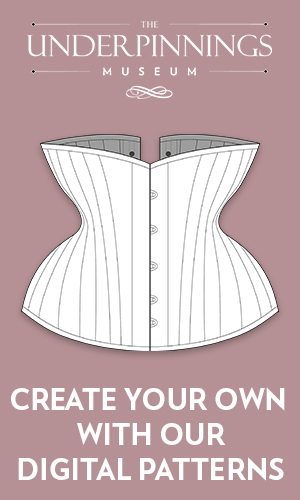Date: c. 1920s
Origin: United States
Fabric: Silk and lace
Brand: Warner’s ‘Egyptian’
This luxurious bra was produced for the ‘Egyptian’ sub-brand of Warner Brothers. It was sold alongside another, lower-priced bra from the same label that can viewed within the Underpinnings Museum’s collection here.
Unusually for the 1920s, this bra features shaped, separated cups. In line with the fashionable silhouette of the period, these cups are cut with relatively little volume, and so would offer rather a flattening effect to the bust, rather than the lifted and separated shape that became popular in the 1930s.
The bra has a number of luxurious details: the cradle is made from silk charmeuse lined with cotton tulle, and the cups from a Schiffli embroidered cotton tulle. The neck and underbust edges are finished with a narrow lace trim. The shoulder straps are made of silk ribbon, and a silk ribbon rosette embellishes the centre gore. The bra fastens with a pre-made, cotton twill hook and eye tape. The garment is entirely machine stitched, using mostly a very fine and narrow zigzag stitch.
Originally this bra retailed for $2.98, which would be approximately $43 today. It is marked a size 34, which presumably refers to an overbust size of 34″.
In the late nineteenth century, New York physician Dr Lucien Warner gave up his practice to begin a new career lecturing on women’s health issues, including the effects of the corset. In 1873, he designed a corset that provided the desired fashionable shape along with increased flexibility. The following year, Lucien Warner and his brother founded Warner Brothers Corset Manufacturers. After buying Mary Phelps Jacob’s brassiere patent in 1915, Warner’s went on to introduce lettered cup sizing in the 1930s and released its first line extremely successful of ‘Merry Widow’ foundation garments in 1952.
In 1968, the Warner Brothers Company changed its name to Warnaco and, by the mid-70s, had become a multi-national with almost twenty clothing divisions. In 1986, Linda J Wachner engineered a hostile takeover before streamlining the company’s divisions into just two clothing categories: menswear and underwear.
From the collection of Karolina Laskowska
